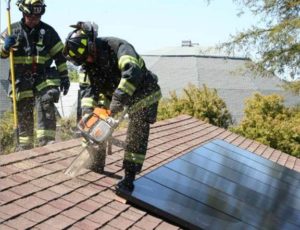2020-09-22: Adopted at the International Fire Conference: SFE 2016 DUBLIN (www.sfe-fire.eu) …
Many years have passed since the 1972 UN Stockholm Declaration on the Human Environment and the 1992 Rio Declaration on Environment and Development. In 2016, Sustainable Development remains an intricate, open, dynamic and continually evolving concept. The guide and driver for frontline practitioners, policy and decision makers must be a personal Code of Ethics … an integrated and inter-related whole which cannot be reduced to fixed rules inviting game playing and ‘trade-offs’. After working with this Code, it may be necessary to expand on and discuss its principles and/or some of the issues raised … not to narrow its focus, but to broaden interpretation.
2016 Dublin Code of Ethics – Design, Engineering, Construction & Operation of a Safe, Resilient & Sustainable Built Environment for All (Download PDF File, 91 Kb)
.
CODE APPLICATION & PURPOSE
The realization of a Safe, Inclusive, Resilient & Sustainable Built Environment demands a concerted, collaborative, very creative and widely trans-disciplinary effort at national, local, regional and international levels across the whole planet – Our Common Home. The informed operation of appropriate legislation, administrative procedures, performance monitoring and targeting, and incentives/disincentives, at all of these levels, will facilitate initial progress towards this objective … but not the quantity, quality or speed of progress necessary. Our time is running out !
This Code of Ethics applies … for those who subscribe to its values … to policy and decision makers, and the many different individuals and organizations directly and indirectly involved in the design, engineering, construction, and operation (management and maintenance) of a Safe, Resilient & Sustainable Built Environment for ALL.
The Purpose of this Code of Ethics is to guide the work of competent individuals and organizations in a context where incomplete or inadequate legislation, administrative procedures and incentives/disincentives exist … but, more importantly, where they do not exist at all … and, amid much confusion and obfuscation of the terms, to ensure that implementation is authentically ‘sustainable’, and reliably ‘safe’ and ‘resilient’ for every person in the receiving community, society or culture … before it is too late !
.
.
END
#Twitter … @sfe2016dublin …
#Sustainability #HumanRights #ResponsibleNeeds #Ethics #ValueSystem #SustainableDesign #Creativity #BuiltEnvironment #ClimateDisruption #CascadeEffect #CulturalHeritage #SocialSolidarity #FireEngineering #Construction #CJWalsh #DublinCodeOfEthics #SustainableDevelopment #PersonCentred #LocalContext #BeyondCodes #VulnerablePeople #PwAL #FireSafety4ALL #Accessibility4ALL #SocialWellbeing4ALL







